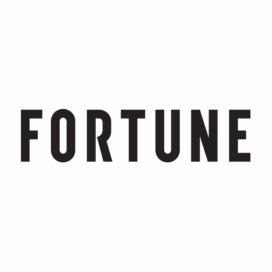Amazon’s Latest Challenge: Building a House of [Meaningful] Brands
Published: November 14, 2017 / Author: Carol Phillips
We are accustomed to thinking of Amazon as a mega-retailer, a place to access a wide array of brands at the best price. Yet Amazon is a leading provider of private label and stand alone brands on its own right, a ‘house of brands.’ Support for its private label merchandise currently relies heavily on distribution, pricing and promotion clout, rather than classic brand building techniques.
These are powerful advantages, but without an investment in brand building, they may not be enough to compete directly with brands in the future.
Amazon’s Brands Today: Powerful Subbrands
Imagine a future where the default price option in every category is a brand offered by Amazon. It doesn’t take a lot of imagination, as in some categories this may already be the case.
Amazon’s many subbrands include Amazon Basics (electronics), Amazon Essentials (apparel), Amazon Elements (baby), Echo, Alexa, and Kindle. Combined sales of these six brands in the first half of 2017 exceeded half a billion dollars. According to an August 2017 consumer survey, two-thirds of consumers who had bought clothing online in the past year bought clothing from Amazon. Similar results were seen in personal care (64%) and furniture/home décor (63%).
Amazon’s Brand Future: Stand Alone Brands
To be more than a low price alternative, Amazon needs a “house of brands.” And it is setting out to create one. In the past two years, Amazon introduced over 20 private label brands. New brands include Pinzon, Lark & Ro, Scout & Ro, Ella Moon, Franklin & Freeman, Happy Belly, James & Erin, Society New York and Buttoned Down. These house-brands are just the start. In July, Amazon announced a brand focused on trendy bags and shoes, The Fix, which is introducing new items on a monthly basis. And just last week we learned that Amazon is moving into Nike and Lululemon’s territory with its own sports apparel brand. It is reportedly working with known sportswear-makers’ suppliers and manufacturers, many of which already sell to Uniqlo, Gap and Kohl’s.
Amazon’s private label brands enjoy substantial distribution and promotion clout. Many are featured first when searching, and often are the only option to many searches with Alexa voice. Amazon’s new Prime Fashion service is likely to features its own brands in their selections. These marketing advantages come ‘free’ to Amazon Private Label products, further reducing cost. Given these advantages, it should come as no surprise that its stand alone brands are growing rapidly, many doubling sales in the first half of 2017.
Some industry experts speculate that Amazon could surpass Macy’s as the largest apparel retailer in the US by nearly tripling its 5% share of the total US apparel market in 2015 to almost 15% by 2020. True these apparel brands have the backing and promise of Amazon. Don’t like it? Return it, and try something else! Yet is convenience and price alone enough to catapult unknown brands to success?
What’s Missing?
To succeed with stand alone brands, Amazon will need to draw on classic brand building strategies like segmentation, brand vision and positioning, relationship and community building and customer experience. To date, Amazon has made only modest efforts to communicate a unique value proposition for its stand alone brands. Giving the customer a reason to buy beyond price is the heart of branding. Once established, this affinity justifies premium prices, builds preference and repeat sales, and results in equity that has tangible value.
Apparel from Amazon: Why Buy?
Amazon’s private label women’s apparel brand, Lark&Ro, grew 84% in sales H1 2016 to H1 2017 according to 1010Data Report “Amazon Private Labels Report — a rate of growth any brand would envy. It appears to offer value priced work wear for women of all ages, body shapes and budget levels. A search for the brand brings 428 results, ranging from $165 cashmere sweaters to $29 jersey dresses. Each item is well described, and value priced, but there is no sense of why I should buy this dress. The shopping experience is utilitarian, with no suggestions of how to accessorize, when to wear or why to buy. In fact, it has little to offer beyond the product.
Compare these similarly priced cashmere cardigan sweater offerings, one from Lark&Ro and another from the established women’s brand, Boden. The Lark&Ro presentation is standard Amazon, bare bones and utilitarian.
With the 20% discount, the price of these sweaters is comparable. But which sweater would she feel better about buying? Moreover, Boden has a well-established brand reputation for quality basics, which is missing from Lark and Ro.In contrast, Boden’s sweater presentation provides a more satisfying shopping experience. The description is evocative – “There’s soft – and there’s Boden cashmere soft….” There are suggestions for how to get the “complete look” and links to photos on Facebook and Pinterest. As with Lark and Ro, there are positive customer reviews, and free shipping.
The Power of a Brand
Relying strictly on search can severely limit a brand’s audience. According to 1010Data’s analysis, ‘dress’ is the most common search term resulting in a Lark&Ro purchase. Search terms shed light on a user’s buying journey. Searching for the brand name indicates brand recognition, while generic searches suggest a lack of name pull. This insight suggests Lark & Ro is likely gaining new customers largely from consumers who are doing generic searches for dresses on Amazon.
For Lark & Ro to compete with brands like Boden it will take more than favorable search positions, low price and Prime shipping. It will require a clear sense of who is the target, how she shops and what’s her fashion sense. She will need reassurance that this sweater is not just good quality, but will fit her wardrobe and make her feel on trend. No small order. It will also most likely face backlash from its branded competition, some of which like Nike and Birkenstock, which have already shown they are increasingly uneasy on the site.
Signs are pointing to a battle of the brands like we’ve never seen before.
Related Stories





